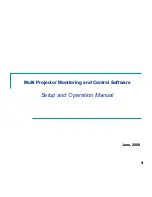
You create and configure each layer of a
static interface
manually through an existing
configuration mechanism such as the command-line interface (CLI) or Simple Network
Management Protocol (SNMP).
Unlike static interfaces, dynamic interfaces are not restored through nonvolatile
storage (NVS) after a reboot.
Autodetection
The router performs
autodetection,
also referred to as
autosensing,
to determine the
layers of each dynamic interface. The autodetection process occurs when the router
conditionally constructs interface layers based on the encapsulation type of the
incoming packet.
Autodetection only uses system resources on demand based on what is detected in
the incoming packet. Dynamic interfaces are created as a result of traffic on the
interface. Dynamic interfaces can also be dynamically deleted without your
intervention, thereby enabling any consumed system resources to be returned.
Unlike dynamic interfaces, static interfaces always allocate system resources upon
creation, and always consume system resources, even when the interface is quiescent.
Types of Dynamic Interfaces
There are two types of dynamic interfaces: upper-layer and bulk-configured.
Bulk-configured dynamic interfaces enable you to dynamically create ATM 1483
subinterfaces and VLAN subinterfaces by bulk-configuring a range of identifiers.
There are two types of bulk-configured dynamic interfaces:
■
ATM 1483 interfaces over static ATM AAL5 interface
■
VLAN subinterface over static VLAN major interface
For more information, see “Configuring Dynamic Interfaces Using Bulk Configuration”
on page 623.
Upper-layer dynamic interfaces enable you to dynamically create the following
configurations:
■
Dynamic IP, PPPoE, PPP, MLPPP, and bridged Ethernet interfaces over a static
ATM 1483 interface
■
IP or PPPoE interfaces over VLAN interfaces and Ethernet, Gigabit Ethernet, and
10-Gigabit-Ethernet interfaces.
NOTE:
Ethernet interfaces in this chapter refer to any of these interfaces Fast Ethernet,
Gigabit Ethernet, or 10–Gigabit-Ethernet.
516
■
Overview
JUNOSe 11.1.x Link Layer Configuration Guide
Summary of Contents for JUNOSE 11.1.X - LINK LAYER CONFIGURATION 4-7-2010
Page 6: ...vi...
Page 8: ...viii JUNOSe 11 1 x Link Layer Configuration Guide...
Page 26: ...xxvi List of Figures JUNOSe 11 1 x Link Layer Configuration Guide...
Page 34: ...2 Chapters JUNOSe 11 1 x Link Layer Configuration Guide...
Page 230: ...198 Monitoring VLAN and S VLAN Subinterfaces JUNOSe 11 1 x Link Layer Configuration Guide...
Page 258: ...226 Monitoring 802 3ad Link Aggregation JUNOSe 11 1 x Link Layer Configuration Guide...
Page 334: ...302 Troubleshooting JUNOSe 11 1 x Link Layer Configuration Guide...
Page 394: ...362 Monitoring Multiclass MLPPP JUNOSe 11 1 x Link Layer Configuration Guide...
Page 406: ...374 Monitoring POS JUNOSe 11 1 x Link Layer Configuration Guide...
Page 468: ...436 Troubleshooting JUNOSe 11 1 x Link Layer Configuration Guide...
Page 498: ...466 Monitoring Bridged Ethernet JUNOSe 11 1 x Link Layer Configuration Guide...
Page 546: ...514 Monitoring Cisco HDLC JUNOSe 11 1 x Link Layer Configuration Guide...
Page 747: ...Part 2 Index Index on page 717 Index 715...
Page 748: ...716 Index JUNOSe 11 1 x Link Layer Configuration Guide...
Page 774: ...742 Index JUNOSe 11 1 x Link Layer Configuration Guide...
















































